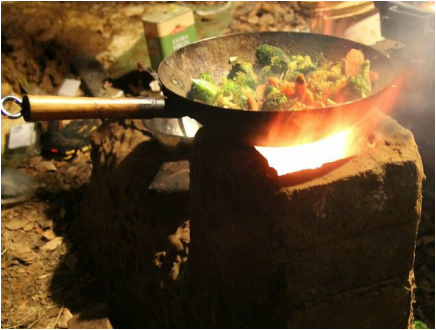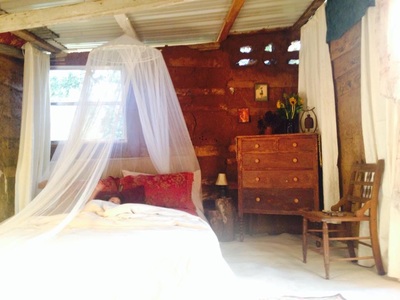The Garden of Eden in Arlington, Texas, works everyday to live sustainable, whether that is through growing their own food, composting all waste, or building biodegradable homes.
The Garden of Eden was created by landowner Shellie Smith and Quinn Eaker, who now acts as leader of the GOE. The community was started with a few members in 2009, with more joining in 2011. Since then, the community has existed on the outskirts of Dallas, continually spreading their message of living sustainable, on the Internet and at various public events.
In the seven years the community has been around, the group has achieved their own version of success: the community has a negative zero carbon footprint, has saved roughly 350,000 pounds of trash from landfills, fed the homeless several times, given away 40,000 free meals a year, and has reported the cost of living is less than $1 a day per person.
–
Sustainable food production
The GOE, which sits on three and a half acres, manages a large garden on their land, which is used for all meals. The garden is half the size of a football field, with irrigated trenches dug into the soil. In this particular plant bed, there are raised truck tires that house different plants and herbs.
Around the garden are natural, wild bushes, fruit and nut trees and medicinal herbs. The group reports that each plant on the property has multiple uses, such as functioning as tools, medicines, or materials for buildings.
In addition to the garden, the community also has chickens for eggs, two goats, and five rabbits.

–
Sustainable housing
At GOE, there are housing structures for short and long term inhabitants. There is a large bedroom in the main house that is sectioned into dormitories for short term inhabitants, with bunks made out of pallets and a curtain divider to separate the ‘rooms.’
The GOE also features an old hot tub turned into a pool for kids, outdoor showers, constructed outdoor bathrooms, and a large, 4,000-square-foot main house. Many community gatherings are in the main house.
Outside of the main bedroom, there is a dome structure made out of wood and tarps. The structure is 16 feet in diameter and height.
Under a tree, lies an RV that has been gutted and re-purposed into a house for inhabitants. Similarly, there is a 1985 Chevy Suburban which has also been gutted and buried within a foot of earth. The inside of the Suburban can house a queen size bed, and the interior has been carpeted.
In 2014, the community built a cob cottage with reusable pallets, reclaimed tin roofing and carpet remains. The structure is six pallets wide, four deep. It lies underneath the branches of a few trees at the edge of the plot.

–
Sustainable living
The community cooks over wood fires – in outdoor kitchens during the summer and fall, when the weather is warm enough to permit it. Otherwise, the community will cook inside the main house during the winter and spring. The group, though they believe burning wood is not entirely sustainable, does burn wood because it is abundantly available to the community.
Equivalently, the community composts everything organic: paper, cardboard, food, and human waste. Composting toilets are used and there is a long-term compost section on the land. Everything composted then becomes soil.
The video below shows glimpses of the Garden of Eden and community members. The video was posted on Aug. 14, 2015, on the community’s YouTube account.